Research shows that one common synthetic cathinone, called 3,4-methylenedioxypyrovalerone (MDPV), is 10 times stronger than cocaine. A 2023 review published in Cureus found that long-haul COVID-19, which involves ongoing symptoms after the initial illness, may lead to conditions like postural orthostatic tachycardia syndrome (POTS) in some individuals. Managing POTS symptoms often involves maintaining adequate sodium intake to regulate blood volume and fluid balance, which helps alleviate symptoms such as dizziness and fainting when standing.
What is their effect on the body?
According to the National Institute on Drug Abuse, behavioral treatments such as cognitive behavioral therapy and motivational enhancement therapy have shown effectiveness in treating bath salt addiction. They act treatment and recovery national institute on drug abuse nida as strong stimulants and may be sought by a person who normally uses cocaine or methamphetamine. Even a person who sees that they are experiencing harm from abuse of these drugs may not be able to stop himself.
What is the legal status of bath salts in the U.S.?
- Eating too much sodium may also lead to low levels of other nutrients in the body.
- Such patients display agitation, combative behavior, hallucinations, delusions, hyperthermia, tachycardia and hypertension (Prosser and Nelson, 2012; Spiller et al, 2011).
- As a new psychoactive substance, little is known about the full addictive potential of bath salts.
- Immediately call 911 if someone behaves violently or has breathing problems or seizures after using bath salts.
Watch for signs of dehydration, such as dark urine, dry mouth, headache, fatigue, and dizziness, and use urine color as a simple gauge — aim for pale yellow to clear urine for optimal hydration. Braddock highlights that while personalized electrolyte replacement plans are common in sports to optimize performance based on individual needs, for most people, daily dietary sodium intake is typically already adequate. Certain drugs may increase the risk of hyponatremia or low sodium levels by increasing sodium excretion through the urine.
What Are Bath Salts (Synthetic Cathinones)?
But they can also lead to immediate, life-threatening health problems that require medical attention. Around the world, Narconon drug rehabilitation centers helping individuals avoid these dangers by enabling them to leave drug abuse far behind. In some 45 locations, Narconon enables people to achieve drug-free lives. Serious physical damage is also possible, as in the case of the New Orleans woman who lost her arm, shoulder, breast and other tissue after an injection of bath salts into her forearm set up a chain reaction of tissue death. Arizona law enforcement personnel reported that a man high on bath salts tried to break into an operating room armed with a fire extinguisher.
Mind Matters: The Body’s Response to Bath Salts
This leads to hallucinations and irrational behavior, so much so that those taking such drugs can end up in serious trouble. In many ways, it’s similar to the PCP epidemic of the early ’80s, and the overall effects are quite similar. In 2012, calls about bath salts to poison control centers peaked with 2,697 and declined each year after that. Promoted as providing a “legal high” that can escape detection in drug tests, bath salts are intended to mimic the hallucinogenic and euphoric highs of methamphetamine or cocaine.
Though most people consume plenty of sodium daily—much more than their bodies need—certain people require more sodium due to medical conditions or excessive fluid loss. Sodium is a mineral naturally found in many foods, such as meat, fish, and vegetables. It’s also found in table salt, which is made of 40% sodium and 60% another mineral called chloride. All these things can be deadly, even if someone only tries the drug once.
Containers of bath salts will also have warnings, such as “not suitable for human consumption.” Manufacturers do this in an attempt to avoid legal restrictions. There are no approved medications that treat addiction to synthetic cathinones. Drugs.com provides accurate and independent information on more than 24,000 prescription drugs, over-the-counter medicines and natural products. This material is provided for educational purposes only and is not intended for medical advice, diagnosis or treatment. Data sources include Micromedex (updated 7 Jul 2024), Cerner Multum™ (updated 14 Jul 2024), ASHP (updated 10 Jul 2024) and others. Adding salt to water can be beneficial if you’ve experienced significant electrolyte losses from sweating heavily or frequent urination, especially during hot weather.
Osmolality, which refers to the concentration of particles in a fluid, affects how well a beverage hydrates explains Braddock. Although certain people may require extra sodium, most healthy individuals have no issue maintaining optimal sodium levels and don’t require additional sodium in their diets or in supplemental form. If you or someone you know is fighting drug addiction, recovery is possible. Talk to your health care provider or check your state or local health department websites. Bath salts can cause users to have an out-of-body experience, elated mood, or feel delirious.
While the body needs a small amount of sodium daily, many people in the United States consume far too much from salty snack foods, take-out meals, and other high-sodium foods. For example, people with hyponatremia (low sodium levels), defined as a sodium concentration of less than 135 mEq/L, are treated with intravenous alcohol and diabetes sodium or oral salt tablets in medical settings. Low sodium levels can be caused by a number of health conditions, including chronic diarrhea, kidney disease, liver failure, and the use of certain medications and illicit drugs. Bath salts are human-made stimulants that are chemically similar to methamphetamine and MDMA.
In vivo microdialysis studies in rats confirm that mephedrone and methylone (0.3 or 1.0 mg/kg, i.v.) increase extracellular levels of dopamine and serotonin in the brain, similar to the effects of MDMA. Little is known about the pharmacology of MDPV, but our unpublished findings show the drug is a potent blocker of dopamine and norepinephrine uptake. The fact that synthetic cathinones enhance influence of genetic background in alcohol dependency dopamine transmission predicts high abuse liability. Mephedrone (0.24 mg/infusion) is readily self-administered by rats, but reinforcing effects of other synthetic cathinones are largely unexplored. Few preclinical studies have examined the pharmacokinetics and metabolism of synthetic cathinones or the consequences of chronic drug dosing, and these types of investigations are needed.
Mephedrone and methylene, two khat-derived bath salts, are very similar in action to amphetamines. These designer drugs, desired for their stimulant effects, may also produce hallucinogenic and euphoric ‘highs’. Bath salts are taken orally (mixed with food or a beverage), snorted, inhaled, or injected. Snorting and injecting are the most harmful and dangerous ways to consume these dangerous, psychoactive drugs. Bath salts are a designer drug of abuse with reports of dangerous intoxication from emergency departments across the US.
Other names, including brand names, for bath salts include White Lightning, Cloud Nine, Red Dove, Cotton Cloud, Bloom, Vanilla Sky, Lunar Wave, White Snow, Ivory Wave, and Scarface. They’re sold online and in head shops, convenience stores, gas stations, under categories such as jewelry cleaner, phone-screen cleaner, or plant food. Synthetic stimulants often referred to as “bath salts” are from the synthetic cathinone class of drugs. Synthetic cathinones are central nervous stimulants and are designed to mimic effects similar to those produced by cocaine, methamphetamine, and MDMA (ecstasy). Despite the widespread use of bath salts, there is a paucity of information about their pharmacology. Mephedrone is about two-times more potent than methylone as a transporter substrate.
Khat is used in East Africa and southern Arabia for its stimulant properties. If you use bath salts for a long time, you can become suspicious (paranoid) of others. They give you a “high” that affects how you see others and the world around you. Their effects are similar to the effects of amphetamine and ecstasy (MDMA).
Other potentially fatal drug reactions are suicidal feelings and overdose. Overdose is the most common complication from the use of bath salts. The drugs’ packaging often states «not for human consumption» in an attempt to circumvent drug prohibition laws.[5] Additionally, they may be described as «plant food», «powdered cleaner», or other products. Users usually snort the drug up the nose, but it can also been injected, smoked, swallowed or used rectally.
The synthetic cathinones people use to make bath salts are not legal in the U.S. Certain synthetic cathinones are used in medications to treat specific conditions. Others, such as the ones found in bath salts, are illegal in the U.S. It’s required for vital processes such as blood pressure regulation and nerve function.

